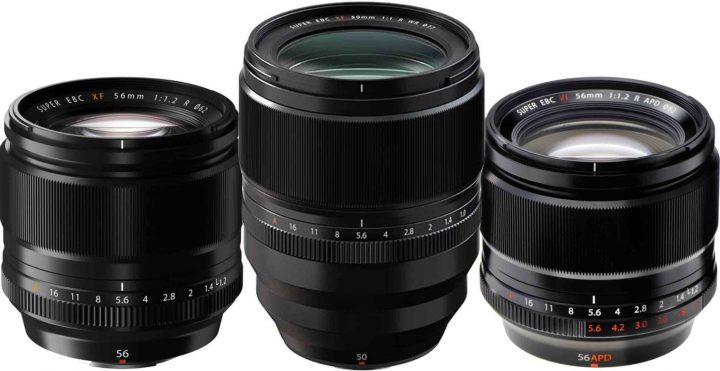4½ Great Reasons Why the Fujinon XF50mmF1.0 Exists (NOT Shallower DOF) and Differences to 56mmF1.2 (APD)
Fujinon XF50mm f/1.0
So, the Fujinon XF50mm f/1.0 R WR has just been announced:
- XF50mmF1.0 in USA: BHphoto, AmazonUS, Adorama, Focuscamera
- XF50mmF1.0 in EU: AmazonDE, CalumetDE, WexUK, ParkcamerasUK, JessopsUK, AmazonUK, PCHstore
Sure, the big eye-catcher is that “EFF-ONE-POINT-ZERO”, which makes it worlds first mirrorless f/1.0 lens with autofocus.
But what if I told you, that by focusing on the super-shallow DOF, we actually miss out on the probably even more exciting features of the brand new XF50mm f/1.0?
Because, in my opinion, beating the DOF of the 56/1.2 is not the point of this lens, or at least not the only one, and certainly not the main one.
The Beauty Beyond Shallow DOF
Ok, looking at the first reviews of the XF50mmF1.0 (all included in our live blogging), it’s clear to see that the Fujinon XF50mmF1.0 offers a shallower DOF over the Fujinon XF56mmF1.2. It’s more or less the difference you see between an f/1.8 and f/1.4 full frame lens: visible, but nothing earth-shattering, nice to have but not absolutely necessary.
In short: you’ll probably not immediately sell your Fujinon XF56mmF1.2 just to get that extra shallow DOF of the XF50mmf/1.0.
But there might be as well other reasons to grab a Fujinon XF50mmF1.0.
Let’s check them out.
The Problems with XF56mmF1.2 and XF56mmF1.2 APD
Let me state it clearly: as an owner of the Fujinon XF56mmF1.2 I can assure you that this lens is optically wonderful!
But I remember that when Fujifilm launched the Fujinon XF56mmF1.2, some people did not really fell in love the bokeh quality of it. I mean, it was nice, but not super-buttery-smooth-creamy nice.
Fujifilm listened, and released the Fujinon XF56mmF1.2 APD, basically the same lens with a built-in apodization filter for softer bokeh at a price tag of $1,499.
But here is the thing.
The APD filter on the XF56mmF1.2 has also its downsides:
- the APD filter reduces the amount of light that reaches the sensor, hence reduces out-of-focus blur: used at f/1.2, the Fujinon XF56mmF1.2 APD has an effective lens speed of f/1.7
- at apertures of f/5.6 and smaller, the APD filter has no effect at all: you should use it between f/1.2 and f/2 for the filter to have a visible impact
- negative impact on autofocus performance: phase detection autofocus (PDAF) is not available. The lens focuses using the slower contrast detection AF only (CDAF)
- Price difference: the Fujinon XF56mmF1.2 APD is significantly more expensive than the regular XF56mmF1.2
The real point of the Fujinon XF50mm f/1.0
With all that in mind, we can see 4½ reasons why the XF50mmF1.0 lens exists (with the ½ to take with a bit of humor):
- give you the advantage you would get from an APD filter (glorious bokeh quality), but get sharper results than the XF56mmF1.2 APD
- as opposed to the 56APD, retain Phase Detection AF and allow autofocus to operate at -7EV luminance level
- the weather sealing
- shooting at a bit lower ISO in low light compared to the 56/1.2 thanks to the f/1.0 aperture
and…
4½. if one day you stumble on a full frame aficionado, who says that Fuji has no f/1.4 DOF FF equivalent super-fast portrait lens, you can kindly, elegantly and politely… let’s say… disagree ;).
From all we could see so far (and has been shared in our live blogging), the Fujinon XF50mmF1.0 is an optical stellar lens with a strong and unique character (Jonas Rask defined it the portrait lens version of the magical XF35mmF1.4), the smoothest bokeh of any Fujinon lens (according to some reviewers even better than the 56APD) and sharp from corner to corner even at f/1.0 (according to Gordon from Cameralabs).
So, there is much more to love about the Fujion XF50mm f/1.0 than just it’s super shallow DOF, with the bokeh quality being the biggest reason to love it. And on top of it, you’ll get the faster AF, the weather sealing, minimal focus breathing, the shallower DOF and the better performance in low light.
- XF50mmF1.0 in USA: BHphoto, AmazonUS, Adorama, Focuscamera
- XF50mmF1.0 in EU: AmazonDE, CalumetDE, WexUK, ParkcamerasUK, JessopsUK, AmazonUK, PCHstore
Follow FujiRumors: Patreon, Facebook, Instagram, RSS-feed, Youtube, Flipboard and Twitter
Join Our Owners Groups
- Fujifilm GFX User Group
- Fujifilm X-T User Group
- Fujifilm X-H User Group
- Fujifilm X-E User Group
- Fujifilm X-Pro User Group
- Fujifilm X100 line Group
Join Our Facebook Pages


